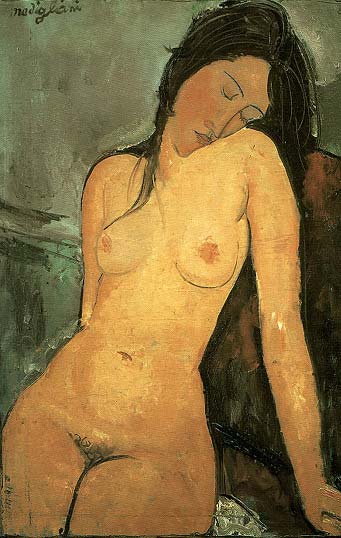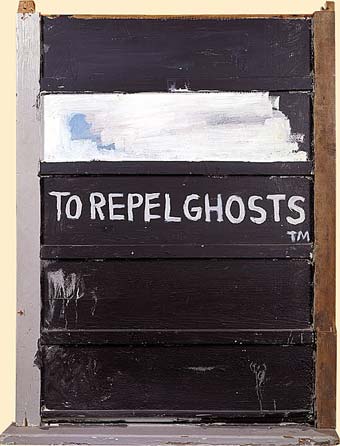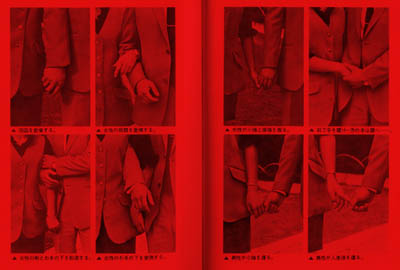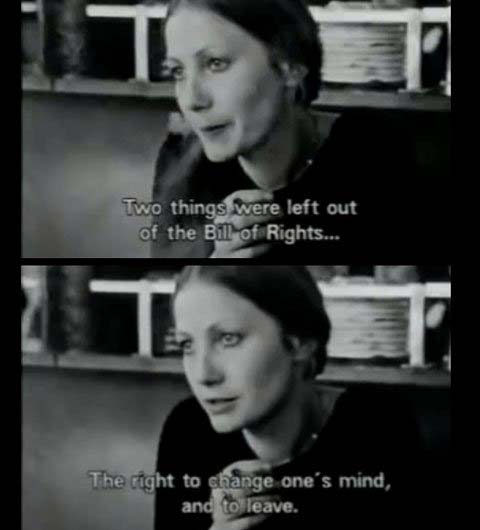Lost in thought, gazing far away into the distance
Earlier this year, the euro was sold as a proxy for a variety of ailments in the eurozone. However, as we argued then and now, the euro will not only prevail, but triumph over the US dollar in the medium to long-term.
Let’s first debunk the myth that economic growth is necessary to have a strong currency – just look at Japan.To understand why the euro may continue to strengthen, consider the yen: how has Japan, with its dismal economic growth had such a strong currency? Unlike the US, which requires foreigners to finance its current account deficit, Japan has a trade surplus while financing its budget deficit domestically. (…)
It’s often been lamented that the eurozone has no central finance minister to co-ordinate a fiscal response in a crisis. (…) Rarely observed, however, is the major advantage of not having a central Treasury secretary: it is far more difficult to spend money. In the US, it’s comparatively easy to stuff a trillion dollars into the banking system; in the eurozone, the money has to come from regional, often local, governments which is a far more painful process. (…)
In an effort to impose structural reform, the ECB has held the eurozone on a comparatively short leash ever since the introduction of the euro. As a result, most European consumers, particularly German ones, are far less leveraged than their US counterparts. Tightening in the eurozone won’t, therefore, automatically derail a eurozone recovery.
In contrast, US consumers remain on life support; most of the support by way of extraordinary monetary policies is aimed at reducing the number of homeowners “under water” in their mortgages. Given that it is politically unacceptable to encourage consumers to downsize, the most realistic alternative is to push up the price level to bail out these homeowners. As free market forces would favour further de-leveraging and lower home prices, such a policy is going to require an extraordinary monetary and fiscal effort; this may not lead to sustainable growth, but will show up in assets with the greatest level of monetary sensitivity, i.e. through a weaker dollar, and higher precious metals and commodities prices.
This story is beginning to unfold before our eyes: the Fed is likely to engage in more quantitative easing, amplified by Bernanke’s unequivocal comments that the Fed will resist market pricing of inflation expectations that it deems too low. Those regions that resist this path, such as the eurozone, may experience weak economic growth on the backdrop of relatively strong currencies.
There are many potential pitfalls to the Fed’s strategy; we can, however, be reasonably certain, that the strategy poses grave risks to the US dollar. A strong euro is no accident; a temporarily strong dollar was.
‘A poet must leave traces of his passage, not proof.’ –René Char
We do hate to give up control over the most important things in our lives. And viewing happiness as subject to external influence limits our control — not just in the sense that whether you get to live happily might depend on how things go, but also in the sense that what happiness is is partly a matter of how things beyond you are. We might do everything we can to live happily — and have everything it takes on our part to be happy, all the right thoughts and feelings — and yet fall short, even unbeknownst to us. That’s a threatening idea.
{ Opiniator/NY Times | Continue reading }
We can actually reprogram our brains to be happier, says Achor. “The brain is like a single processor in a computer.” Someone who is chronically negative or pessimistic is merely scanning first for the stresses and the hassles of life. And because the brain has finite resources, it cannot also scan for the positive elements. As a result, that person continuously reinforces his own negativity, causing himself to feel unhappy.
Birds too never find out what they say. Like our small talk.
Understanding how ant colonies actually function means that we have to abandon explanations based on central control. This takes us into difficult and unfamiliar terrain. We are deeply attached to the idea that any system of interacting agents must be organized through hierarchy. Our metaphors for describing the behavior of such systems are permeated with notions of a chain of command. For example, we explain what our bodies do by talking about genes as “blueprints,” unvarying instructions passed from an architect to a builder. But we know that instructions from genes constantly change, as genes turn off and on in response to local interactions among cells.
Ant colonies, like genes, work without blueprints or programming. No ant understands what needs to be done or what its actions mean for the welfare of the colony. An ant colony has no teams of workers dedicated to fighting or foraging. Although it is still commonly believed that each ant is assigned a task for life, ant biologists now know that ants move from one task to another.
Colonies are regulated by networks of interaction. Ants respond only to their immediate surroundings and to their interactions with the other ants nearby. What matters is the rhythm of interactions, not their meaning. Ants respond to the pattern and rate of their encounters with each other, as well as to the smells they perceive in the world, such as the picnic sandwiches. (…)
A real ant colony is not a society of scheming, self-sacrificing individuals. It is more like an office that communicates by meaningless text messaging in which each worker’s task is determined by how many messages she just received. The colony has no central purpose. Each ant responds to the rate of her brief encounters with other ants and has no sense of the condition or the goals of the whole colony. Unlike the ants in Anthill, no ant really cares if the queen dies.
Ant colonies are not the only complex systems that function without central control. Brains, too, have no chain of command. (…) No one really knows how intelligence is distributed in the human brain. (…) The outstanding scientific questions about ants and brains are the same ones we have about many other biological systems that function without hierarchy, such as the immune system, the communities of bacteria in our bodies, and the patterns we see in the diversity of tropical forests. For all of these systems, we still don’t understand how the parts work together to produce the dynamics, the history, and the development of the whole system.
Smiling at the lovely reflection which the mirror gave back to her
For more than three decades evolutionary psychologists have advanced a simple theory of human sexuality: because men invest less reproductive effort in sperm than women do in eggs, men’s and women’s brains have been shaped differently by evolution. As a result, men are eager for sex whereas women are relatively choosy. But a steady stream of recent evidence suggests this paradigm could be in need of a makeover.
”The science is now getting to a point where there is good data to question some of the assumptions of evolutionary psychology,” says social psychologist Wendy Wood of the University of Southern California (U.S.C.). (…)
The proportion of mating effort dedicated to short-term mating was the same for men and women. Similarly, both men and women showed an equivalent tendency to lower their standards for sex partners, and men did not report feeling constrained to have far fewer sexual partners than they truly desired.
“I’d certainly accepted the idea that men pursue purely sexual relationships with greater fervor than women do,” says Paul Eastwick of the Texas A&M University in College Station. “This is the first time I’ve seen data that makes me think, ‘Hmm, I wonder if that sex difference isn’t so robust.’” (…)
Surveys have indeed found that in the U.S. and several other industrialized countries more men than women express greater concern with sexual infidelity than with emotional infidelity (falling in love with someone else). But another recent study suggests jealousy patterns could have something to do with glitches in people’s ability to form secure relationships.
Spell me how every word will be bound over to carry three score and ten toptypsical readings

It’s not hard to find frightening examples of malware which steals personal information, sometimes for the purpose of making it public and at other times for profit. Details such as names, addresses and emails are hugely valuable for companies wanting to market their wares.
But there is another class of information associated with networks that is potentially much more valuable: the pattern of links between individuals and their behavior in the network–how often they email or call each other, how information spreads between them and so on.
Why is this more valuable? An email address associated with an individual who is at the hub of a vibrant social network is clearly more valuable to a marketing company than an email address at the edge of the network. Patterns of contact can also reveal how people are linked, whether they are in a relationship for example, whether they are students or executives, or whether they prefer celebrity gossip to tech news.
This information would allow a determined attacker to build a remarkably detailed picture of the lifestyle of any individual, a picture that would be far more useful than the basic demographic information that marketeers use today that consists of little more than sex, age and social grouping.
Today, Yaniv Altshuler at Ben Gurion University and a few pals argue that the value of this data makes it almost inevitable that malicious attackers will attempt to steal it. They point out that many companies already mine the pattern of links in their data for things like recommender systems.
related { Many of the most popular applications on the social-networking site Facebook have been transmitting identifying information—in effect, providing access to people’s names and, in some cases, their friends’ names—to dozens of advertising and Internet tracking companies. | Wall Street Journal | full story }
image { Polly Morgan, Black Fever, 2010 | taxidermy crow wings, wood, wire }
It was Madame Vera Verity, directress of the Woman Beautiful page of the Princess novelette

Differences in our perception of physical beauty have an enormous impact on the fashion, cosmetics, and weight control industries, and more recently on aesthetic surgery trends. Understanding how culture and region alter the perception of beauty is therefore not only of anthropological and social interest but underpins multibillion dollar industries across the globe.
According to Anil Mathur of Hofstra University in New York and colleagues there and at the City University of New York, marketers can hope to expand their reach into overseas markets but they cannot build brand equity if they lack regional knowledge and an understanding of consumer characteristics and preferences across cultures.
Mathur and colleagues have now tested a physical vanity scale across China, India and USA and have established that the scale could be used across culturally diverse countries. (…)
The team found that while the details concerning beauty perception may differ, their data supports the notion that physical vanity is a universal construct that applies across cultures.
artwork { Modigliani, Seated Nude, 1916 }
Every day, the same, again
 Experience: I was impaled by my own sculpture.
Experience: I was impaled by my own sculpture.
NYC kid uses Match.com to find a husband for his mom.
Man claims rabbits damaged his car.
South Fla. man gets $650,000 from strip club after dancer’s heel shatters his eye socket.
Foot fetish landlord is facing jail.
Taiwan to legalise prostitution.
Tony Curtis buried with his iPhone in Las Vegas.
Some 3,000 Millionaires Claim Jobless Benefits, IRS Data Show.
Five times more Americans than Britons say they are homosexual or bisexual, research suggests.
Why intelligent people drink more alcohol.
Study confirms: Whatever doesn’t kill us can make us stronger.
 Experimentation, orgasms, and the rise of anal sex.
Experimentation, orgasms, and the rise of anal sex.
Ants work together, share food and send their elders into battle to protect the young.
Study confirms women have become more like men.
Why Are Women More Religious Than Men?
Psychology and Sexuality: The Natural and the Normal in the History of Sexuality.
4 kinds of compulsive gamblers identified.
It’s easier to be brilliant than right.
Milky Way Is Square, According To New Galactic Map.
I make a living buying and selling used books.
10 Reading Revolutions Before E-Books.
The Most Efficient Workforces in the World.
Don’t Post Pictures of an FBI Tracking Device You Find on a Car to the Internet.
5 Things You Think Will Make You Happy (But Won’t).
New research has revealed that agriculture came to Europe amid a wave of immigration from the Middle East during the Neolithic period. The newcomers won out over the locals because of their sophisticated culture, mastery of agriculture — and their miracle food, milk.
10 Delicious Vegetarian Recipes.
Who invented the term “rock ‘n’ roll”?
A Comprehensive Glossary Of Gifs.
i luv their music. also they are soo hott which is also why i like them, duh!
They rule. [2004]
Hermann Scherchen rehearses Bach. [Thanks James]
The movibles are scrawling in motions, marching, all of them ago, in pitpat and zingzang

Why do worms crawl on the sidewalk after it rains?
Worms do not drown when it rains … Worms of all kinds are highly susceptible to dessication [drying out]. They breed when it rains. They come out of the ground to find each other and to lie side by side in a mating posture, a difficult thing to do in the confines of their burrows. [And we complain about the back of a Ford!] The only time earthworms can safely come to the surface to breed is when the ground is thoroughly soaked … Worms don’t have lungs.
artwork { Cy Twombly, Untitled, 1970 }
But the horn, the drinking, the day of dread are not now

When I was seven years old, I would sit by the window and wait for Mr. Kramer. He would show up at 4:00 every Wednesday. He wore a brown fedora and a rumpled brown suit and had a stub of an unlit cigar hanging from his mouth. He always had a great big smile on his face and, to keep the cigar from falling, he clenched it between his teeth and talked in a mumble.
He smelled like a cigar and, now that I think about it, dressed all in brown, he looked like a cigar. A fat, stubby cigar. His big belly would hang over his belt and he always perspired so that winter or summer, you could see beads of sweat on his forehead. He was a nice jolly man and, as a kid, I could never understand why my mother would make a sour face when I would shout out, “Mr. Kramer is here, Mom.”
“How are you, Mrs. Della Femina?” he would ask.
“I am fine,” she would say, deadpan. I never saw her smile in front of Mr. Kramer.
“And you,” he would say, “you little monkey. How are you doing in school?”
“I’ve got three stars already, Mr. Kramer,” I would answer proudly.
“Isn’t that great?” he would say.
While we talked, my mother would be digging into her pocketbook and most of the time she would come up with 75 cents. Sometimes she would say, “Mr. Kramer, I’m a little short this week. Is it okay if I pay you next week?”
“No problem” he would reply. But he would look serious and my Mom would look even more serious. A few seconds later he would break into a smile and say, “I’ll see you next week.” Then he would pinch my cheek and say, “Keep getting those stars, monkey, and everything will be all right.”
“I will,” I would answer, not knowing that as one gets older those stars become harder and harder to come by in life. Then he was off next door to see Adeline, my friend Andy’s mother, and collect her 75 cents.
One day I said, “I really like Mr. Kramer. Why does everybody give him money?” (Thinking to myself maybe this was a career for me. You know, you walk around with a cigar in your mouth, smile and everybody gives you money).
“Because he’s an insurance man.” (…)
At that time, my father, a good union man who voted Democrat all the way, was working at three jobs. He was a press operator at The New York Times. He sold newspapers in the Sea Beach (now the N) train station, starting at 6:00 in the morning. And he ran a ride in Coney Island from 7 PM until midnight. The three jobs brought in a total of $35. When you work three jobs to make $35 a week, 75 cents to pay for a coffin when you’re dead is a lot of money. But my mom paid. She had no choice.
artwork { Jean-Michel Basquiat, To Repel Ghosts, 1986 }
Such as she is, from former times, nine hosts in herself

In principle, to be cool means to remain calm even under stress. But this doesn’t explain why there is now a global culture of cool. What is cool?
The aesthetics of cool developed mainly as a behavioral attitude practiced by black men in the United States at the time of slavery. Slavery made necessary the cultivation of special defense mechanisms which employed emotional detachment and irony. A cool attitude helped slaves and former slaves to cope with exploitation or simply made it possible to walk the streets at night. During slavery, and long afterwards, overt aggression by blacks was punishable by death. Provocation had to remain relatively inoffensive, and any level of serious intent had to be disguised or suppressed. So cool represents a paradoxical fusion of submission and subversion. It’s a classic case of resistance to authority through creativity and innovation. (…)
In spite of the ambiguity, it seems that we remain capable of distinguishing cool attitudes from uncool ones. So what is cool? Let me say that cool resists linear structures. Thus a straightforward, linear search for power is not cool. Constant loss of power is not cool either. Winning is cool; but being ready to do anything to win is not. Both moralists and totally immoral people are uncool, while people who maintain moral standards in straightforwardly immoral environments are most likely to be cool. A CEO is not cool, unless he is a reasonable risk-taker and refrains from pursuing success in a predictable fashion. Coolness is a nonconformist balance that manages to square circles and to personify paradoxes. This has been well known since at least the time of cool jazz. This paradoxical nature has much to do with cool’s origins being the fusion of submission and subversion. (…)
In ancient Greece, the Stoic philosophers supported a vision of coolness in a turbulent world. The Stoic indifference to fate can be interpreted as the supreme principle of coolness, and has even been been viewed as such in the context of African American culture. The style of the jazz musician Lester Young, for example, was credible mostly because Young was neither proud nor ashamed.
photo { Randy P. Martin }
With a little difference, till the latest up to date so early in the morning

1. It’s going to get worse
No silver linings and no lemonade. The elevator only goes down. The bright note is that the elevator will, at some point, stop.2) The future isn’t going to feel futuristic
It’s simply going to feel weird and out-of-control-ish, the way it does now, because too many things are changing too quickly. The reason the future feels odd is because of its unpredictability. If the future didn’t feel weirdly unexpected, then something would be wrong.{ Douglas Coupland’s guide to the next 10 years | The Globe and Mail | Continue reading }
photo { Ali Bosworth }
We have found what looks like a labyrinth
In new research published in Psychological Science, scientists analyzed genes in the dopamine system and found a group of mutations that help predict whether someone is inclined toward sensation seeking.
Jaime Derringer and coauthors wanted to use a new technique to find out more about the genetics of sensation seeking. Most obvious connections with genes have already been found, Derringer says. Now new methods are letting scientists look for more subtle associations between genes and all kinds of traits, including behavior and personality.
‘They always say time changes things, but you actually have to change them yourself.’ –Andy Warhol
For the past ten years sales of recorded music have declined so steeply as to become a cautionary tale about the disruptive power of the internet. The rise of illegal file-sharing and the end of the digital “replacement cycle”, in which people bought CDs to replace tapes and records, caused spending to collapse. (…)
The rise in digital music-sales is scant compensation. People tend to buy tracks, not albums, from sites like Apple’s iTunes. They can obtain their favourite music much more cheaply than they could in the CD era. And even digital sales are now stalling. In Japan, mobile and online single-track sales rose only a shade during 2009. So far this year Americans have bought 841m digital tracks, mostly from Apple’s iTunes, according to Nielsen Soundscan—down from 847m at this point last year. Apple now offers plenty of other opportunities to spend money, from iPads to more than 250,000 apps. Music executives believe the company is cannibalising the musical part of its own business.
Yet the music business is surprisingly healthy, and becoming more so. Will Page of PRS for Music, which collects royalties on behalf of writers and publishers, has added up the entire British music business. He reckons it turned over £3.9 billion ($6.1 billion) in 2009, 5% more than in 2008. It was the second consecutive year of growth. Much of the money bypassed the record companies. But even they managed to pull in £1.1 billion last year, up 2% from 2008. A surprising number of things are making money for artists and music firms, and others show great promise. The music business is not dying. But it is changing profoundly.















